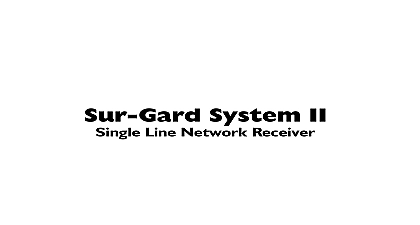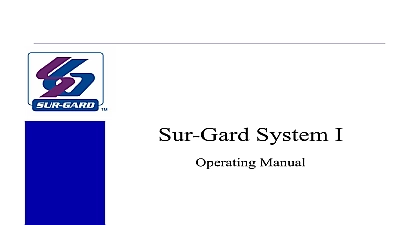DSC System III - Training

File Preview
Click below to download for free
Click below to download for free
File Data
| Name | dsc-system-iii-training-6041587923.pdf |
|---|---|
| Type | |
| Size | 4.33 MB |
| Downloads |
Text Preview
SG III Training Confidential Confidential SG System III is a multi platform digital telephone receiver intended for remote of commercial fire and burglary systems up to 24 48 telephone lines Single and Dual Line cards up to 24 IP communication line cards a combination of the three Data can be processed in up to 64 pre programmed formats profiles per line is transmitted to an automation software via TCP IP or RS 232 is transmitted to a printer via the parallel or serial printer ports can be viewed on the LCD screen of the front panel of the physical receiver can be done from a PC via the SG System Console software or locally the scroll buttons and LCD screen of the receiver rack can contain 12 SG DRL3 cards 12 SG DRL3E 12 SG DRL3 2L or 12 SG DRL3 IP Patented caller Identification call display Patent pending AHS Automatic Handshake selection Patented virtual configurations Non RAM on each line card for programming and event buffer Flash download for software all line cards CPM3 DSP technology Up to 64 options set profiles per line card Up to 8 different handshakes per profile Large LCD All modules function individually All cards are Hot Swappable 24 cards maximum per redundant receiver 512 event memory buffer on each individual line card 768 for DRL3IP Real time clock One parallel printer port two serial RS 232 ports and 10 100Base T connection per rack Operator Acknowledge Programmable serial ports configuration Continuous verification of the computer receiver links with the heartbeat function Fast transmission of multiple alarms to the computer and printer to ensure operator quick response Telephone line supervision Rack mount in standard 19 inch rack higher line security than conventional dial up panels with the polling feature Heartbeats transmissions since dialing or handshaking is not required control panel is the originator of the signals and as such will be the one requesting the ACK from central trouble detection is displayed on LCD Printer and automation software IP for programming of the network Protocols network polling environment for replacement of an existing DVACS network Meets the 90 second requirement for this option event descriptors are used when transmitting information to central station from the control panel the PC Link connection security function communicates to the central station when a module is removed and replaced T LINK accounts table and data encryption keys will be stored in the local data base The SG DRL3 IP can receive data from all DSC IP communicators Please see the communicator for compatibility limitations V2.0 programming can be done from SG Console V2.0 all type of line card SG DRL3 SG DRL3E SG DRL3 2L SG DRL3 IP two system communication bus baud rates Low Speed 57600 and Speed 520000 In a redundancy installation each shelf can have its own rate programming Split Shelf Mode In a redundancy installation programmed in split shelf each SG CPM3 V2.0 will output the signal for his own shelf size of AHS table is now 250000 entries this size can be extend to 500000 after purchase of a license key The Hardware The metal rack of the SG System III that incorporates the and BP3 The Hardware The metal rack of the SG System III that incorporates the LCD BP3 The Hardware This contains the CPU that controls all communication to and up to 24 line cards 3 printers and 2 automation ports The Hardware The power supply unit that provides power to all modules on system A power cord with an IEC connector is required The Hardware This provides 5 VDC power required for the backplane A slot for a second SG DC DC3 voltage converter In the event of a failure redundant SG DC DC3 can be removed replaced without powering the unit The Hardware The Power Supply Controller monitors the state of the power the fan for each SG MLRF3 It also provides the power for the LCD on the SG MLRF3 The Hardware Each SG DRL3 Line card monitors one telephone line It stores up to different profiles for data management including 8 different handshaking Each line card has 512 event buffer for short term retention of the The Hardware Each SG DRL3E Line card monitors one telephone line It stores up 64 different profiles for data management including 8 different handshaking Each line card has 512 event buffer for short term retention of the The Hardware Each SG DRL3 2L Line card monitors two telephone lines It stores to 64 different profiles for data management including 8 different protocols Each line card has 512 event buffer for short term of the signals The green and blue PCB has 100 identical functionality blue PCB is a newer hardware revision The Hardware Each SG DRL3 IP Line card will monitor up to 1536 DSC IP 512 of those IP Communicators can be supervised The Hardware The Hardware The Hardware Installation The Hardware Line Monitoring Phone Line or Network Status LED or 2nd Line monitoring if DRL3 2L Watchdog AC LED CPM Status LED CPM Watchdog Acknowledge Button SCROLL Down button Enter Button SCROLL Up Button 6 with Default Programming incoming calls on the first ring the following handshake order 2300hz 1400hz Dual tone SIA FSK Modem II Modem IIE IIIa2 all communication formats except for 3 2 3 1 checksum SKFSK 4 2 and 4 2 checksum enable option 95 are sent to printer or computer through the serial port COM1 or the port 10 100Base T If a computer is not connected need to acknowledge the signals by pressing button to silent the buzzer Connectivity static IP address per Receiver with associated ports port is used for specific tasks management done from the console software is located on port 1024 SG Console Software is provided for Microsoft Operating system NOT MAC style menu for configuration management features are available with the Console software receiver setup storage and configuration wizards Input Output port communication is provided via port 1025 on the Ethernet port is a Sur Gard standard output and provides Sur Gard standard software II the SG Automation protocol is an open document and is upon request There are additional automation who have fully implemented the protocol Protocols III receiver send a variety of protocols to report signals to the station computer via TCP IP and or R


